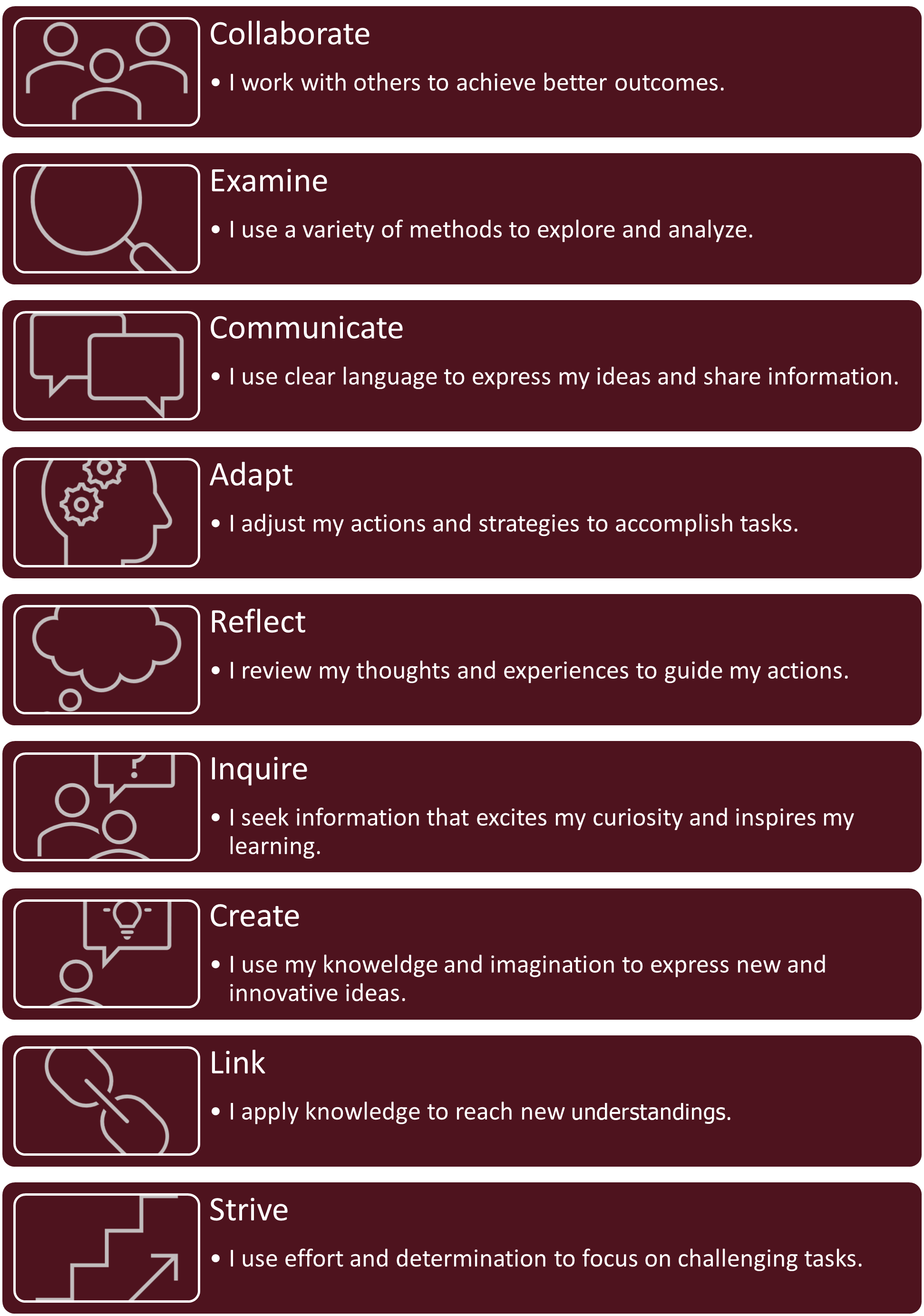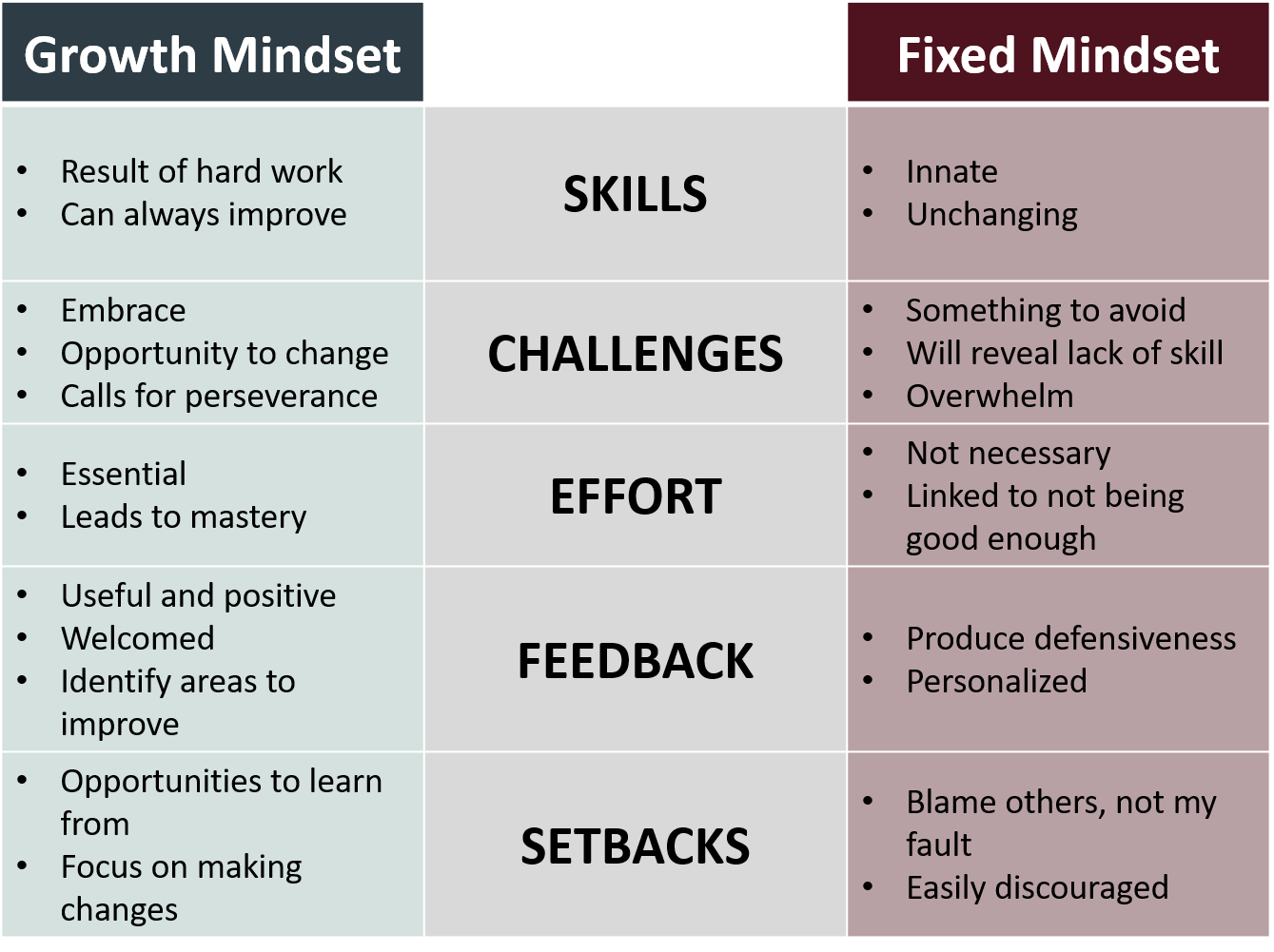Chapter 6: Workplace Essential Skills
6.5 Critical Thinking and Continuous Learning
Critical Thinking
Critical thinking includes your ability to analyze, interpret and reflect on the world. Critical thinking skills include the ability to:
- Understand the links between ideas
- Determine the importance and relevance of arguments and ideas
- Recognize, build, and appraise different points of view
- Identify inconsistencies and errors in reasoning
- Approach problems in a consistent and systematic way
- Reflect on our own assumptions, believes, and values (Skills You Need, 2021).
Watch the following video on 5 tips to improve your critical thinking:

Answer a Problem with Critical Thinking
Critical thinking is something you do, not something you have. To develop this skill, you will need to start by thinking about your method or approach to decision making.
Figure 5 outlines one path of steps that indicate critical thinking. Imagine these as the thoughtful actions that lead to your decision. First, identify the problem or question being as specific as possible about what you are asking. Next, gather and organize information. Find several sources that present a variety of perspectives to ensure you avoid bias. Then, analyze the data and sources to ensure credibility and reliability. This is another spot to be aware of your biases. Look for the data that is most relevant to the question you are trying to answer. Determine if you have enough information to make an informed decision and if not, go back to the information gathering step. When you are ready, make your decision based upon the evidence and information. Finish by communicating your decision to the stakeholders (Indeed, 2021).

Case Study: Samira’s Final Photocopier Recommendation
Step 1, Samira identifies the problem – recommend a new photocopier for the office to purchase. She needs be as specific as possible about the features the copier needs to have. Making a list would be a great place to start. On her list, Samira writes durability, ability to scan and email documents, and large capacity.
Step 2, Samira begins to gather and organize the information. Here she uses her digital skills to find office equipment suppliers and her document use skills to create a Microsoft Excel sheet to record and organize the information as she receives it. She is aware of any biases she might have to either the brand of machine or suppliers.
Step 3, she analyzes the data and sources to ensure credibility and reliability. In this step, she looks for recommendations and reads consumer reports.
Step 4, while the office has several needs, the photocopier must be able to handle heavy copying jobs and will run continuously all day. Samira reviews the quotes and copier specifications to determine the machines that meet the office’s needs. Samira looks over the information she has and realizes that one supplier has forgotten to give her information on the service cost. She sends a query to get this information.
Step 5, Samira is not the one making the final decision on the copier, so she presents her report at the staff meeting. The group reviews all the information that Samira has gathered, asks some clarifying questions, and agree on the copier to purchase. They thank Samira for her hard work and the time that she has saved them in pulling together all of this information.
Step 6, Samira contacts the successful supplier and places the order for the copier. She then contacts the supplies by phone and thanks them for their quotes.
How to Improve Your Critical Thinking Skills
The following are some ways to improve critical thinking.
- Become more self-aware. This includes considering your thought process, values, morals, ethics, and other beliefs as well as thinking objectively about your personal preferences. Know your strengths, weaknesses, and biases as these will help you better understand your perspective.
- Develop foresight. Think about the possible outcomes and what positive and negative changes might occur. Knowing this will help you predict the actions and reactions of making a choice.
- Practice active listening. Active listening and practicing empathy are key to understanding others’ perspectives. It is important to gain a full understanding of what others’ need, want, and expect.
- Ask clarifying questions. Never assume or guess, confirm what you think you know. It is better for others to have to repeat or for you to rephrase points to ensure correctness. Another key point is to ensure whether something is “a fact, an opinion, or an idea” (Indeed, 2021).
- Evaluate existing evidence. Rely on your “previous experiences and [the] facts [you have] to help make your current decision” (Indeed, 2021). Organize the information you have and consider the source of that information.
Continuous Learning
Did you notice that in all of the “how to improve” lists, you always are encouraged to learn more? That is intentional! The most important thing about essential skills is that they are skills that you can continue to improve. Employers value employees that are willing to learn and take on more responsibility. Continuous learning is a skill that will pay dividends in a long-term beneficial relationship with your employer.
Continuous learning is also commonly known as constant learning or lifelong learning. You already know two important components of continuous learning from 1.3 Reflective Practice in WIL.
Remember that growth mindset is about you embracing the unknown, including criticisms and challenges. You need to finding strength and determination in even the most challenging situations. Imagine the possibilities that open up to solve a problem when you set your thinking from “well I guess that won’t work” to think instead “what else could work to solve this”. You demonstrate a growth mindset when you celebrate and learn from your peers’ and colleagues’ successes, put forth efforts to pursue new learning. Have a look at the information below to explore how your mindset can shape your behaviour.

Continuous learning is about you wanting to increase your knowledge, expand your skills, and take on challenges when they come up. It is said that continuous learning is strongly linked to adaptability. There will be shifts and changes in your various jobs and work environments, so adapting a continuous learner attitude will motivate you to embrace the changes and the learning involved that come along with that change.
How to Improve Your Continuous Learning Skills
- Set a goal. That’s right! Take a look at Chapter XX on goal setting, and use your goals to determine what you want to learn and when.
- Plan to learn. Set aside time each week, month, and year to learn new things. If it is a part of your routine, making learning continuous is easier accomplish.
- See learning as a motivator. You are investing in yourself when you prioritize taking classes, researching online, watching videos or tutorials.
- Feed your passions. Take time to learn things that interest you, and they might energize you when it is time to focus on learning tasks that you find less interesting.
Key Takeaways
- Practice reading for different purposes by skimming, using document design, and understanding the conventions of the documents of your workplace.
- Fear of public speaking is common, but there are lots of things you can do to build your confidence and get comfortable sharing your ideas.
- Apply critical thinking to your internet searches to better evaluate your sources and come up with stronger solutions for your employer.
- Never stop learning! All essential skills can be improved with patience, practice, and dedicated learning time.
Image Descriptions
Figure 6.4 Nine traits of critical thinking.
Collaborate – I work with others to achieve better outcomes.
Examine – I used a variety of methods to explore and analyze
Communicate – I use clear language to express my idea and share information
Adapt – I adjust my actions and strategies to accomplish tasks.
Reflect – I review my thoughts and experiences to guide my actions.
Inquire – I seek information that excites my curiosity and inspires my learning.
Create – I use my knowledge and imagination to express new and innovative ideas.
Link – I apply knowledge to reach new understandings.
Strive – I use effort and determination to focus on challenging tasks.
Figure 6.5 Steps in critical thinking
- Identify the problem or question
- Gather and organize information
- Analyze the data and sources
- Determine the significance of the data
- Make a decision
- Communicate your conclusion
Figure 6.6 Growth mindset versus fixed mindset
| blank | Growth Mindset | Fixed Mindset |
|---|---|---|
| Skills |
|
|
| Challenges |
|
|
| Efforts |
|
|
| Feedback |
|
|
| Setbacks |
|
|
Media Attributions
- “Figure 6.4 Nine traits of critical thinking” by Deb Nielsen, Emily Ballantyne, Faatimah Murad and Melissa Fournier is licensed under a CC BY-NC 4.0 licence. Based on Love, 2017.
- “Figure 6.5 Steps in critical thinking” by Deb Nielsen, Emily Ballantyne, Faatimah Murad and Melissa Fournier is licensed under a CC BY-NC 4.0 licence. Based on Indeed, 2021.
- “Figure 6.6 Growth mindset versus fixed mindset” by Deb Nielsen, Emily Ballantyne, Faatimah Murad and Melissa Fournier, adapted from ClipArt Max, n.d. is licensed under a CC BY-NC 4.0 licence.
References
Black, R. (2021). Glossophobia (fear of public speaking): Are you glossophobic? Psycom. Retrieved from https://www.psycom.net/glossophobia-fear-of-public-speaking
Brumwell, S. & MacFarlane, A. (2020). Improving numeracy skills of postsecondary students: What is the way forward? Higher Education Quality Council of Ontario. Retrieved from https://heqco.ca/wp-content/uploads/2020/07/Formatted_Numeracy_FINAL.pdf
Cambridge Dictionary. (2021). Open-mindedness. Cambridge Dictionary.
ClipArt Max. (n.d.). Growth vs. fixed mindset: Approaching a challenge with a growth mindset. ClipArt Max. https://www.clipartmax.com/middle/m2i8b1b1Z5K9A0Z5_growth-vs-fixed-mindset-approaching-a-challenge-with-a-growth-mindset/
Dixon, J.A. (2019). 5 digital skills you really need for life and work. Youth Employment UK. https://www.youthemployment.org.uk/5-digital-skills-you-really-need-for-life-and-work/
European Commission (2021). New report shows digital skills are required in all types of jobs. Digibyte. https://digital-strategy.ec.europa.eu/en/news/new-report-shows-digital-skills-are-required-all-types-jobs
Glassdoor. (2021). How to improve your attention to detail skills. Glassdoor. Retrieve from https://www.glassdoor.com/blog/guide/attention-to-detail/
Government of Canada. (2021). Document use self-assessment. Skills for Success. https://www.canada.ca/en/services/jobs/training/initiatives/skills-success/tools/document-use-self-assessment.html
Harris, R. (2002, 2020). Evaluating internet research sources. Virtual Salt. http://www.virtualsalt.com/evaluating-internet-research-sources/
Hawkins, E. (2021). 7 tips to improve verbal communication skills. Call Rail. https://www.callrail.com/blog/7-tips-to-improve-verbal-communication-skills/
Inc. (2020). Oral communication. Inc. https://www.inc.com/encyclopedia/oral-communication.html
Indeed. (2021). 6 ways to improve critical thinking at work. Indeed. https://www.indeed.com/career-advice/career-development/how-to-improve-critical-thinking
Jordan, T. (2020). 6 steps to become a better reader. The New York Times. https://www.nytimes.com/interactive/2020/05/27/burst/6-steps-to-become-a-better-reader.html
Karrera, M. (2020). How to develop your attention to detail skills. CareerAddict. https://www.careeraddict.com/develop-your-attention-to-detail-skills
Live&Learn. (2021). 8 digital skills that make you employable and help you succeed in the workplace. Essential Digital Skills. https://livelearn.ca/article/digital-citizenship/8-digital-skills-that-make-you-employable-and-help-you-succeed-in-the-workplace/
Love, S. (2017). 9 traits of critical thinking. Mentoring Minds. https://www.mentoringminds.com/learn/blog/9-traits-of-critical-thinking/
Mcaninch, O. (2020). How to improve your numeracy skills. ABC Money. https://www.abcmoney.co.uk/2020/01/28/how-to-improve-your-numeracy-skills/
Moffat, M. & Rasmussen, H. (2016). Big idea: A Canada-wide transformation of numeracy skills. Canada 2020. https://canada2020.ca/numeracy/
Nandy, P. (2017). How top companies use storytelling to drive results. Inside HR. https://www.insidehr.com.au/how-top-companies-use-storytelling-to-drive-results/
Skills/Competencies Canada. (2021). Essential skills resources. Government of Canada. https://www.skillscompetencescanada.com/en/essential-skills/resources/
Smith, M. & Last, S. (n.d.). Oral and visual presentations. In Technical writing essentials. https://pressbooks.bccampus.ca/technicalwriting/
UNESCO. (2018). Digital skills critical for jobs and social inclusion. UNESCO. https://en.unesco.org/news/digital-skills-critical-jobs-and-social-inclusion

